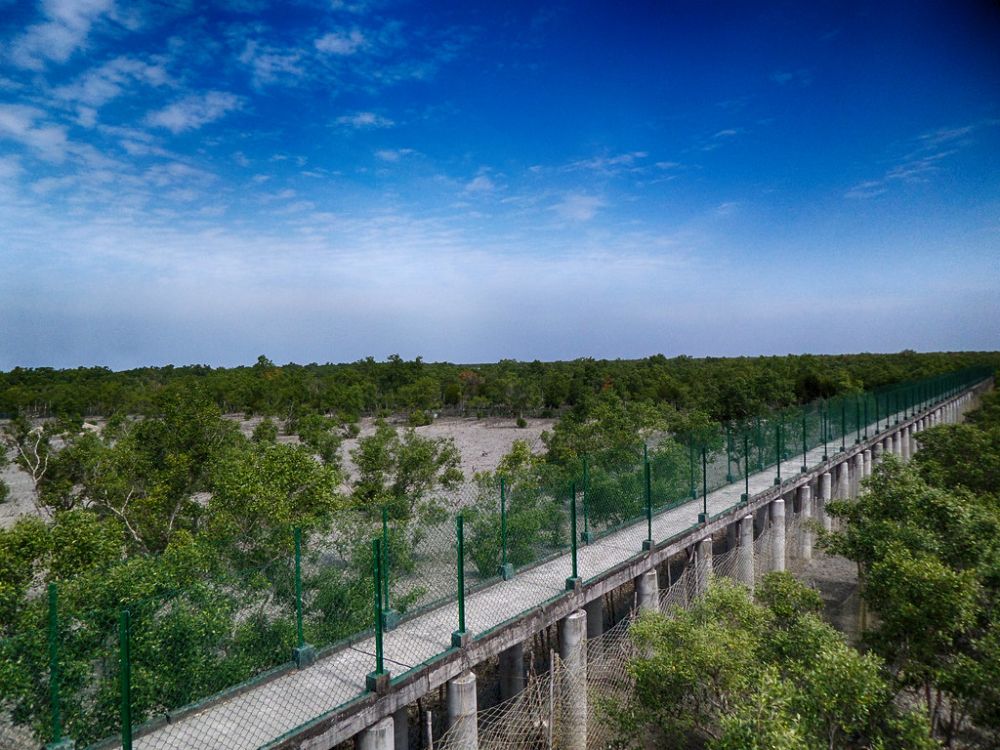

Nestled in the heart of the Sundarbans, the largest mangrove forest in the world, the Dobanki Watch Tower offers an unparalleled vantage point for wildlife observation and appreciation of this UNESCO World Heritage Site. The Sundarbans, spread across parts of West Bengal, India, and Bangladesh, has long been a place of mystery and natural wonder with its dense mangrove forests and an intricate web of tidal waterways.
Tourism in the Sundarbans has a relatively recent history, with increased interest in the latter half of the 20th century. The region's accessibility improved as conservation efforts took center stage and the intrinsic value of its biodiversity became widely recognized. The establishment of the Sundarbans Tiger Reserve in 1973 marked a significant step in the conservation and management of the region's unique ecosystems, paving the way for responsible tourism.
The Dobanki Watch Tower itself was constructed as part of the efforts to promote ecotourism and allow tourists to experience the area's rich wildlife and unique terrain safely and sustainably. Offering views over a deer park and a canopy walk through the forest, it provides an immersive experience into the wild without disturbing the natural habitat of the Sundarbans' most elusive inhabitants, including the Royal Bengal Tiger.
In recent years, there's been a noticeable shift towards more eco-conscious travel internationally, and the Sundarbans is riding this wave. Tourists are increasingly seeking out destinations that offer not only natural beauty but also sustainability and education about conservation. The experience of visiting the Dobanki Watch Tower is enhanced by guided tours with knowledgeable local guides who educate visitors about the fragile ecosystem and the importance of preserving it.
Responsible Tourism Practices: With heightened awareness of environmental impacts, efforts are being made to limit ecological footprints through controlled group sizes, strict guidelines on waste management, and efforts to minimize human-wildlife conflict.
Community Benefits: Tourism has also become an important source of livelihood for local communities, providing jobs and encouraging the safeguarding of the Sundarbans' natural resources. Empowerment of local populations is now an integral part of the tourism trend here, ensuring that the benefits of tourism are equitably distributed.
Technological Integration: Today's visitors are more connected than ever, with online bookings, virtual tours, and a plethora of information available at their fingertips. Travel companies and conservation authorities are increasingly utilizing technology to enhance the visitor experience and streamline conservation efforts.
To visit the Dobanki Watch Tower, travelers typically arrive at the nearest town of Canning and make their way to the waterways where boat safaris take them into the Sundarbans. The journey itself is part of the experience, allowing for an intimate encounter with the landscapes that so famously inspired novelist Amitav Ghosh and countless others.
Best Time to Visit: The months of November to February are considered the best time to visit, with pleasant weather and the highest visibility for wildlife spotting.
The Dobanki Watch Tower's blend of adventure, education, and conservation offers a powerful example of modern ecotourism. Encouraging responsible travel choices, it continues to attract visitors from all over the globe, cementing Sundarbans' place as a pinnacle of nature tourism in India.